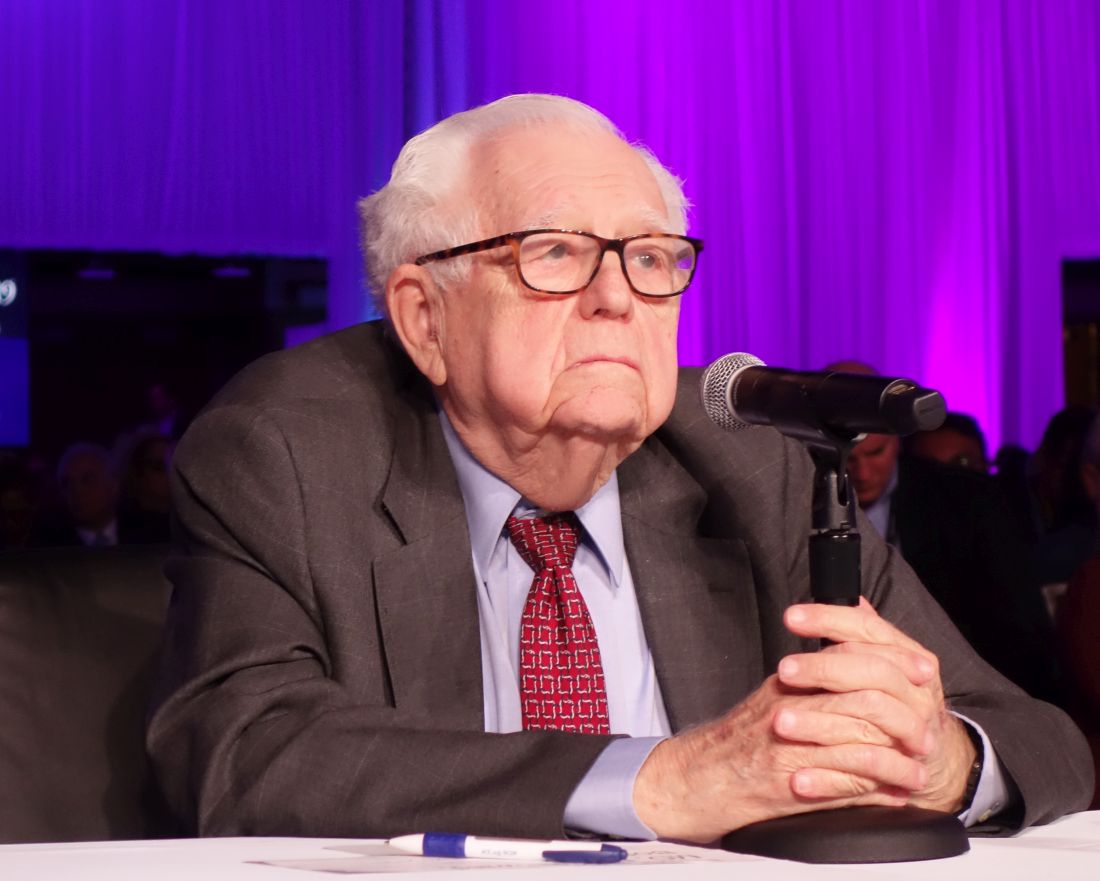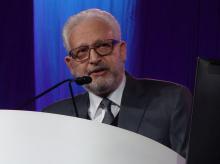NEW ORLEANS – Patients with severely symptomatic aortic stenosis at low surgical risk had significantly better key outcomes with transcatheter aortic valve replacement than with surgical valve replacement through 1 year of follow-up in the landmark PARTNER 3 and Evolut Low Risk randomized trials presented at the annual meeting of the American College of Cardiology.
As the two study presenters stepped down from the stage after sharing their results, the packed audience in the meeting’s main arena rose to shower them with a prolonged standing ovation.
“This is a historic moment, and all of us here should recognize it as such,” thundered discussant Eugene Braunwald, MD, professor of medicine at Harvard Medical School, Boston. “We’re going to remember it. We’re going to tell our grandchildren and great grandchildren that we were there at the time these incredible advances in the care of patients with aortic stenosis were presented.”
This was in fact the day that transcatheter aortic valve replacement (TAVR), a relatively young, rapidly evolving nonsurgical technique, finally overtook surgical aortic valve replacement (SAVR), a mature operation first successfully performed back in 1962. Previous large, randomized trials had established that TAVR was superior to SAVR in extreme-risk patients and noninferior to surgery in high- and intermediate-risk patients, yet with the advantage of much quicker recovery. The only remaining question was how TAVR would stack up in low-risk patients, who comprise 80% of those who currently undergo SAVR for aortic stenosis.
“Two separate groups using two separate valves have come to very similar conclusions. This doesn’t double the acceptability, it quadruples it,” Dr. Braunwald said.
PARTNER 3
Martin B. Leon, MD, presented the findings of the PARTNER 3 (Placement of Aortic Transcatheter Valves) trial, in which 1,000 low-risk patients at 71 centers were randomized to TAVR with transfemoral placement of the balloon-expandable Edwards Lifesciences Sapien 3 bioprosthetic valve or to SAVR. The mean age of the patients was 73 years, with a mean Society of Thoracic Surgeons risk score of 1.9%. Operators had to have more than 1 year of experience using the Sapien 3 valve in order to participate in the trial.
At 1 year post procedure, the rate of the primary composite endpoint comprising death, stroke, or cardiovascular rehospitalization was 8.5% in the TAVR group and 15.1% with SAVR, for a highly significant 46% relative risk reduction. All three components of the primary endpoint occurred significantly less often in the TAVR group. And the rate of the key endpoint of death or disabling stroke was 1.0% with TAVR, compared with 2.9% with SAVR, reported Dr. Leon, coprincipal investigator in PARTNER 3 and professor of medicine at Columbia University, New York.
TAVR also outperformed SAVR on all six prespecified major secondary endpoints. These included new-onset atrial fibrillation within 30 days, at 5.0% with TAVR and 39.5% with SAVR; length of index hospitalization at 3 versus 7 days; all stroke at 30 days at 0.6% versus 2.4%; and death or a significant deterioration in quality of life at 30 days as measured by the Kansas City Cardiomyopathy Questionnaire at 3.9% versus 30.6%. There was significantly less life-threatening or major bleeding within 30 days in the TAVR group, by a margin of 3.6% versus 24.5%, and similarly low rates of new pacemaker implantation at 6.5% versus 4.0%. There was, however, a higher 30-day incidence of new left bundle branch block with TAVR, by a margin of 22% versus 8%, which may eventually translate into need for a pacemaker.
“Based upon these findings, TAVR, through 1 year, should be considered the preferred therapy in low-surgical-risk aortic stenosis patients. The PARTNER randomized trials over the past 12 years clearly indicate that the relative value of TAVR, compared with surgery, is independent of surgical risk profiles,” Dr. Leon declared.



